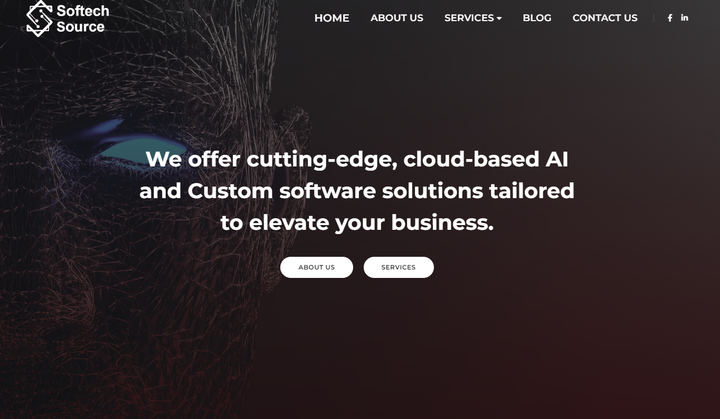Best Web Development: Crafting Exceptional Websites and Applications
الجسم

Web development is a vital aspect of the digital landscape, enabling businesses to create engaging, user-friendly websites and applications. The Best Web Development practices focus on efficiency, scalability, and an optimal user experience. This article explores the core principles, methodologies, and tools that define top-tier web development, offering insights for developers and organizations striving for excellence in their web projects.
Core Principles of Best Web Development
-
User Experience (UX) Design: Ensuring a seamless and intuitive user experience is paramount. Best practices involve conducting user research, creating detailed user personas, and designing interfaces that are easy to navigate. Consistent user feedback and usability testing are crucial for refining the design.
-
Responsive Design: With the proliferation of devices, responsive design is essential. Best practices include using flexible grid layouts, scalable images, and CSS media queries to ensure the website performs well on various screen sizes and devices.
-
Performance Optimization: Fast load times and efficient performance are critical for user retention. Best practices involve optimizing images, minifying CSS and JavaScript files, using content delivery networks (CDNs), and implementing lazy loading for resources.
-
Security: Protecting websites from vulnerabilities is essential. Best practices include using HTTPS, securing user data through encryption, regularly updating software and libraries, and conducting security audits to identify and fix potential threats.
-
SEO-Friendly Development: Ensuring that websites are search engine optimized helps in driving organic traffic. Best practices include writing clean, semantic HTML, optimizing meta tags and headings, improving site speed, and creating a logical URL structure.
Leading Web Development Methodologies
-
Agile Development: Agile methodology emphasizes flexibility, collaboration, and iterative development. Best practices involve using frameworks like Scrum or Kanban, holding regular stand-up meetings, and delivering incremental improvements through sprints.
-
DevOps: DevOps integrates development and operations to streamline the deployment process. Best practices include automating testing and deployment with CI/CD pipelines, using infrastructure as code (IaC), and monitoring performance and security continuously.
-
Lean Development: Lean development focuses on efficiency and value delivery by minimizing waste. Best practices involve building Minimum Viable Products (MVPs), validating assumptions through user feedback, and iterating based on insights to improve the website continuously.
-
Test-Driven Development (TDD): TDD involves writing tests before developing the actual code. Best practices include creating comprehensive test cases, ensuring high test coverage, and refactoring code based on test results to maintain quality and reliability.
Leading Web Development Tools
-
Integrated Development Environments (IDEs): IDEs like Visual Studio Code, Sublime Text, and Atom offer powerful features for coding, debugging, and testing. Best practices involve leveraging IDE tools for code completion, real-time feedback, and version control integration.
-
Version Control Systems (VCS): Tools like Git and GitHub enable collaborative development and track changes. Best practices include branching strategies, frequent commits, and pull requests to review and merge code changes.
-
Front-End Frameworks: Frameworks like React, Angular, and Vue.js help in building dynamic and responsive user interfaces. Best practices include using component-based architecture, optimizing for performance, and following best practices for code organization and state management.
-
Back-End Frameworks: Frameworks like Node.js, Django, and Ruby on Rails provide robust solutions for server-side development. Best practices include using modular code structures, securing APIs, and ensuring efficient database management.
-
Project Management Tools: Tools like Jira, Trello, and Asana facilitate task management, progress tracking, and team collaboration. Best practices involve defining clear goals, assigning tasks, tracking milestones, and adapting plans based on project needs.
Noteworthy Examples of Best Web Development
-
Airbnb: Airbnb’s website is a prime example of user-centric design, scalability, and performance optimization. Their use of responsive design, seamless navigation, and dynamic content delivery ensures a top-notch user experience.
-
Amazon: Amazon excels in creating a highly scalable and performant website. Their focus on fast load times, personalized recommendations, and robust security measures makes their site a benchmark in e-commerce.
-
Medium: Medium’s platform showcases clean design, excellent typography, and seamless content consumption. Their use of responsive design, easy navigation, and user-friendly content creation tools highlights best practices in web development.
Conclusion
Best web development practices combine user-centric design, performance optimization, security, and scalability to create exceptional websites and applications. By adopting methodologies like agile, DevOps, lean, and TDD, and leveraging tools such as IDEs, version control systems, front-end and back-end frameworks, and project management tools, developers can build high-quality web solutions. As web development continues to evolve, staying updated with best practices and continuously refining development processes will be essential for achieving success in the digital world.







تعليقات